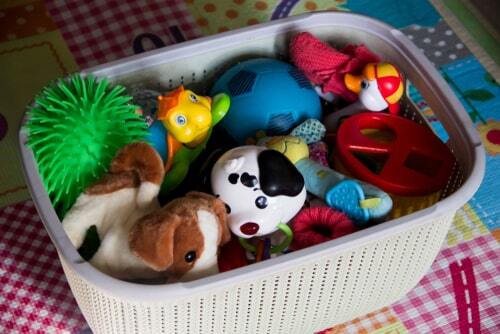A Practical Guide to Making Children a Part of Your Minimalist Lifestyle
A minimalist lifestyle with kids may seem like a contradiction in terms. But, with some effort and patience, it is possible, and wholly worth it.

Over the last three months, we have all spent more time at home, making do with limited supplies and only a few of the conveniences that we are used to. We’re cooking more meals at home, doing more housework, rationing supplies, and cutting out the fat. In short, we’re leading a minimalist life.
If you have kids at home, you try to achieve a balance between what’s good for them and what makes them happy. This is a good time to encourage children to appreciate the simple joys of life. This can be difficult as clutter, chaos and constant cleaning up go hand-in-hand with raising young children. But, with some careful planning, it is possible to parent with less stuff. It is also worth the effort. Here’s how:
‘The Better Home’ brought to you by ‘The Better India’
We created ‘The Better Home’ because you shouldn’t have to choose between non-toxic ingredients and effective cleaning. Our cleaners are safe for babies, pets, skin and our oceans.
Explore our range of powerful, earth-friendly cleaners here.
Be a role model: Minimalist guru Joshua Becker has some important advice for parents starting off on the minimalist lifestyle: start with your stuff, not that of your kids. Before bringing the kids on board, it is important for you to adopt the habits of a simple lifestyle. Start by evaluating the things in your kitchen, bedroom, home office and wardrobe before asking the kids to get rid of their toys and clothes. Let your life be your message. Once they see you downsizing, they will be ready to start implementing with their things.
Keep your child in the loop: It is important, especially for older children to understand the value of your efforts to live life differently. Discuss with them the impact of the choices you are making and involve them in making purchase decisions. They will need to understand the benefits your new lifestyle is bringing you, what goals you’re trying to achieve with your efforts and the impact you hope to have. Let them know of all the alternatives out there to accumulating stuff: the time you can spend as a family, the activities you can take up and the hobbies you can pursue with the money you have saved. While they will grow up to make their own choices, the early foundation you lay will surely help in shaping responsible adults who are grateful for what they have.
Begin with the items they don’t use: A good way to initiate kids into minimalist living without much reluctance is by getting rid of items they have not used in, say, three months. These items can be clothes, books, toys or art supplies. It is important to do this along with them and not when they are asleep or away at school or play. Once they realise that giving away their things is not so bad, they will open up to the idea of decluttering.

Involve children in cleaning up: Teach them some simple rules of decluttering such as getting rid of items they haven’t used in more than three months. Make them ready to part with clothes, toys and books they don’t use. Empower them with the freedom to choose the items they want to get rid of. You could also set aside an hour or so every week to declutter your home, involving the whole family.
It’s ok to say no to your kids: Minimalist living goes beyond decluttering. It is an active shift in the way you value, use and purchase the things you own. Commit to buying less stuff and make sure your children see your actions. When you do buy something, explain your decision to them. The goal should be that children should value the stuff they own, but not derive their self-worth from the things they have.
Create a waiting list for purchases and discards: If there is uncertainty about purchasing an item, put it on the ‘waiting list’. Revisit the list with your children after 30 days and if they continue to feel it is important, you can decide to buy it. Adopt a similar waiting period for items they are unwilling to discard. Put these items in a box for 30 days. Based on how often they get used during this period, you can make a decision about getting rid of it.
Have a ‘space rule’: One easy way to limit kids from hoarding is with the concept of space. For instance, if they keep their toys in a basket or bin, let them know that they can only have as many toys as fill the bin. The same goes for drawing materials, books and knick-knacks. As long as there is space in the drawer, on the shelf or cabinet, they get to keep it. Once space runs out, no more stuff. A similar rule is: one in-one out. Only after an older item is donated or repurposed can a new one be earned.
Teach them to reuse and recycle: Whether it is by fixing the button on a shirt, repairing a cycle or upcycling used or damaged items into something new, it is important for children to understand the value of extending the life of useful items instead of replacing them with new ones. This is also an opportunity for them to pick up skills such as sewing or repairing and explore their creative abilities with craft and DIY projects.
Borrow more, borrow often: This is especially useful in case of items that are not used frequently or are meant for single or short-term use such as baby items, books, tools, special occasion clothing, outdoor/ sporting equipment, luggage, accessories and more. Encourage children to adopt the ‘borrow, not buy’ policy. Once they have borrowed an item, used it for a certain period of time and feel the need to own it, you can always reconsider your decision and make the purchase.
Prioritise activities over things: As you begin downsizing your home, you will find that you not only have more empty space at home, but also longer periods of free time spent without caring for stuff. It is a good idea to fill these gaps with activities that will help children meet new people, learn new skills, develop new hobbies or explore something new.
Like this story? Or have something to share?
Write to us: [email protected]
Connect with us on Facebook and Twitter.
If you found our stories insightful, informative, or even just enjoyable, we invite you to consider making a voluntary payment to support the work we do at The Better India. Your contribution helps us continue producing quality content that educates, inspires, and drives positive change.
Choose one of the payment options below for your contribution-
By paying for the stories you value, you directly contribute to sustaining our efforts focused on making a difference in the world. Together, let’s ensure that impactful stories continue to be told and shared, enriching lives and communities alike.
Thank you for your support. Here are some frequently asked questions you might find helpful to know why you are contributing?


This story made me
-
97
-
121
-
89
-
167













